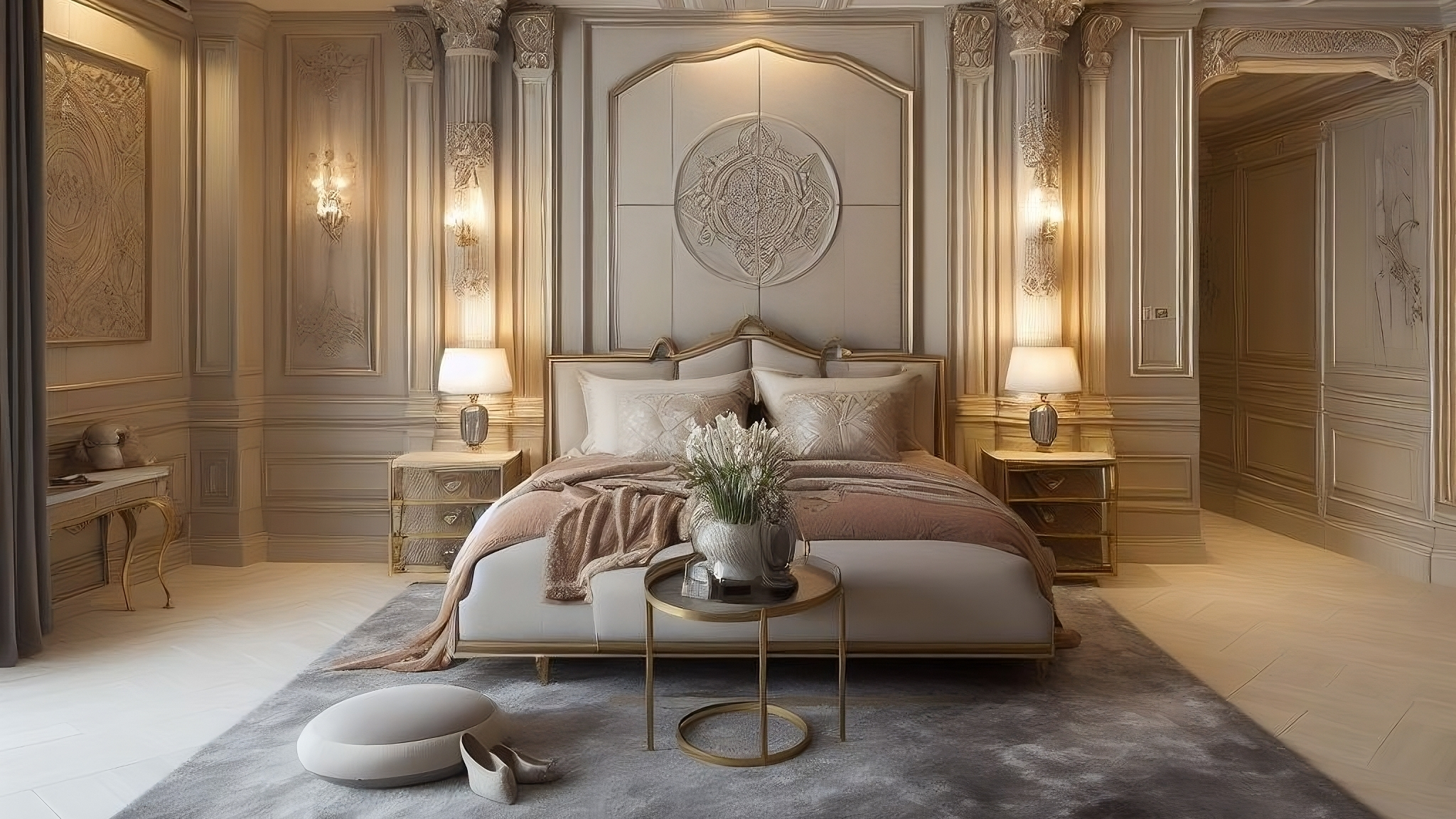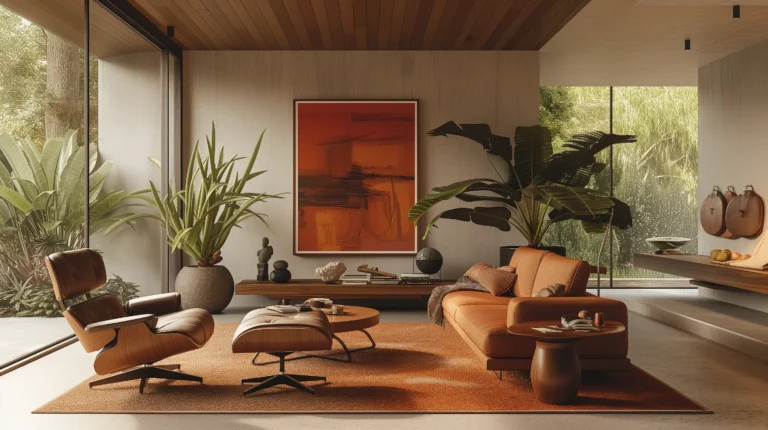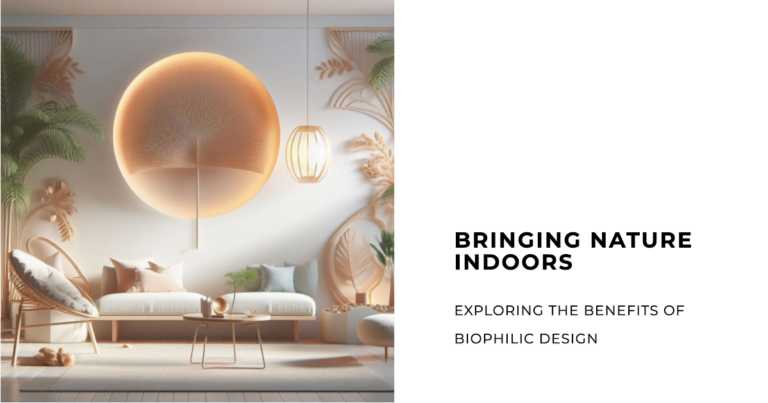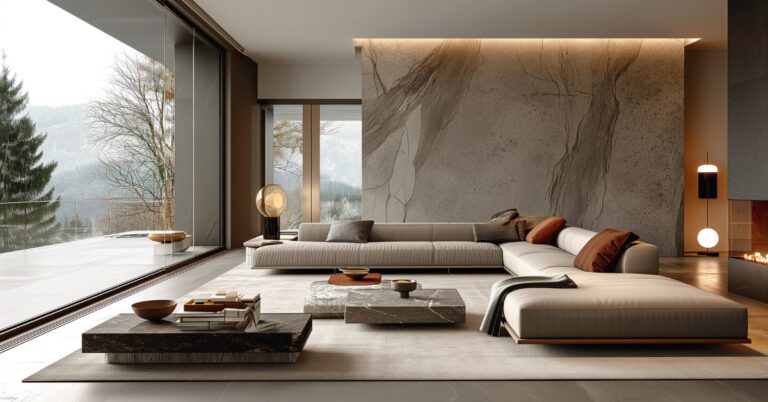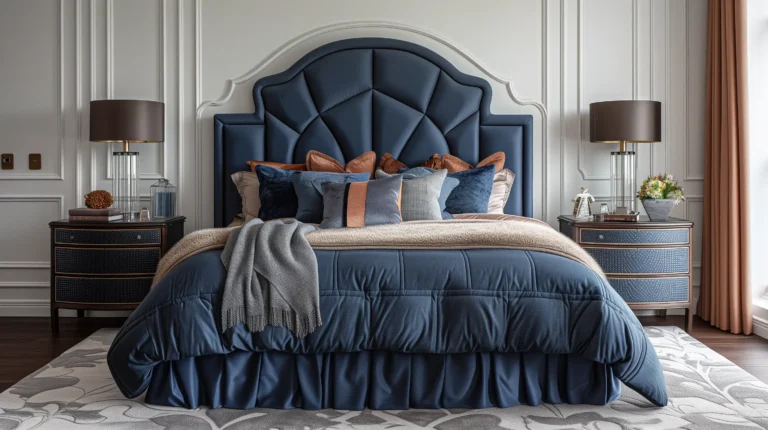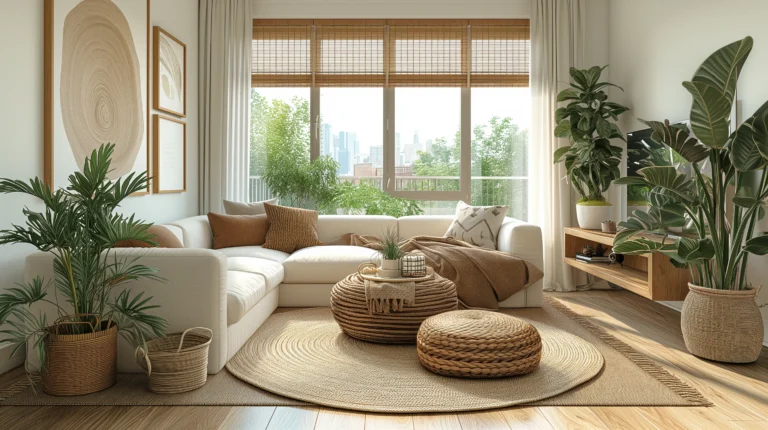Georgian Interior Design—just the name evokes a sense of timeless elegance, doesn’t it? Imagine walking into a room adorned with intricate moldings, classical proportions, and an air of sophistication that’s both comforting and awe-inspiring. That’s the magic of Georgian design, a style that has not only stood the test of time but also adapted beautifully to modern interiors.
In this guide, we’re going on a delightful journey through the rich tapestry of Georgian design. We’ll explore its historical roots, its eclectic artistry, and even get practical with tips for bringing this grandeur into your own home. As the renowned designer Elsie de Wolfe once said, “I am going to make everything around me beautiful—that will be my life.” And what better way to do that than by embracing the elegance of Georgian interior design?
Whether you’re a history buff, a design enthusiast, or someone simply seeking a home that offers psychological comfort, this guide has something for you.
The Timeless Allure of Georgian Design: A Historical Expedition
History is the grand tapestry that weaves together the essence of Georgian design. Picture yourself in the 18th century, a period brimming with cultural and social nuances that shaped the way people lived and, of course, how they decorated their homes. It was a time when architecture and interior design were not just about shelter or function; they were an art form, a statement of personal and societal values.
The Georgian era, spanning from 1714 to 1830, was marked by the reigns of the first four British monarchs of the House of Hanover—George I, George II, George III, and George IV. This period was a fascinating blend of classical influences from ancient Rome and Greece, combined with a British touch. As the iconic designer William Morris put it, “Have nothing in your house that you do not know to be useful or believe to be beautiful.” And in Georgian times, beauty was all about symmetry, proportion, and a deep respect for classical forms.
Imagine grand facades, elegant proportions, and intricate details like cornices and friezes that were more than just decorative elements; they were a testament to the craftsmanship of the time. Windows were large and often adorned with heavy drapes, allowing natural light to play a significant role in the overall ambiance. Fireplaces were the heart of the room, both literally and metaphorically, serving as a gathering point for family and guests.
But Georgian design wasn’t just a monolithic style carved in stone; it was ever-evolving, absorbing influences from the Renaissance, Baroque, and even the exotic lands explored during the period. It was a style that said, “I am open to the world, but I also cherish my roots.”
So, why does Georgian design continue to captivate us today? Perhaps it’s the balance it strikes between opulence and simplicity, or maybe it’s the way each element—from the grandest archway to the smallest decorative trinket—comes together to create a harmonious living space. Whatever the reason, the allure of Georgian design is timeless, making it a style worth exploring and, more importantly, experiencing.
The Eclectic Artistry of the Georgian Era
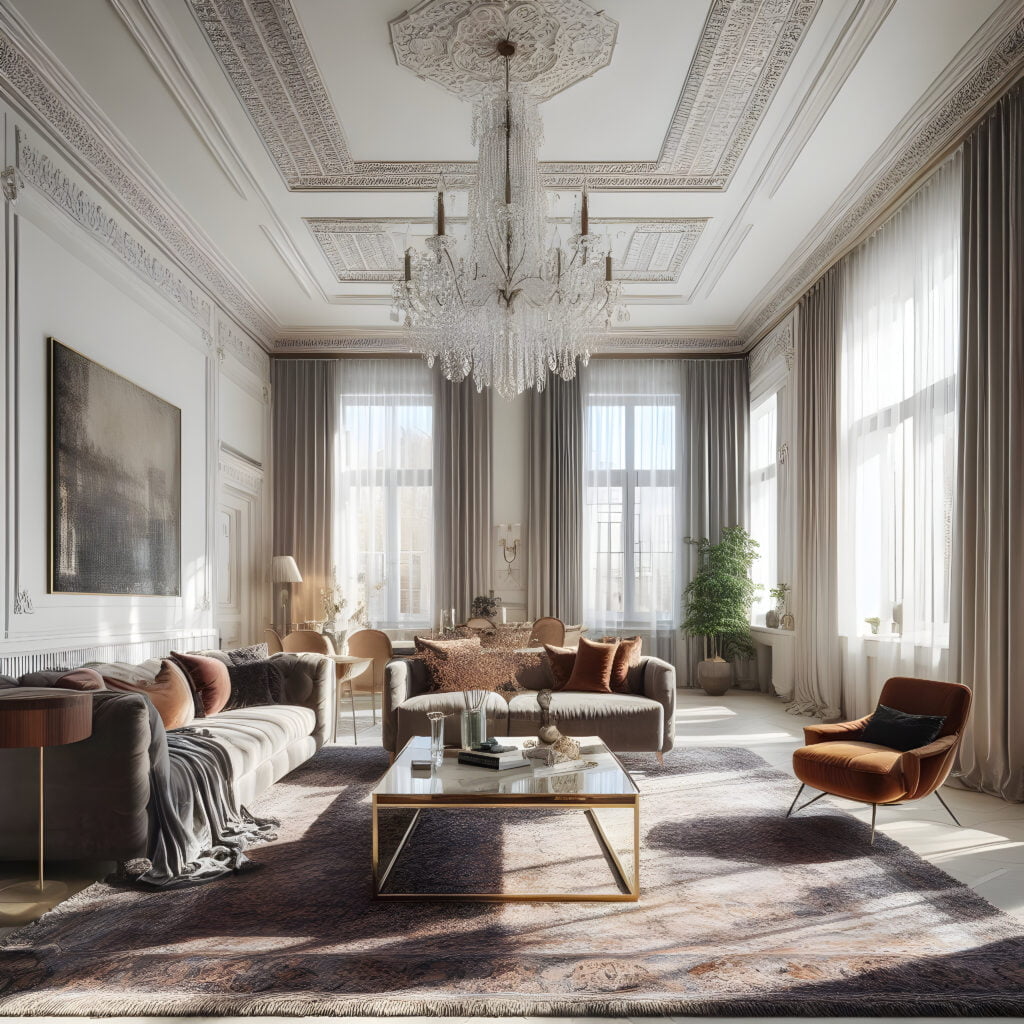
Ah, the Georgian era—often thought of as a singular, monolithic style, right? But let’s shake off that misconception and delve into the eclectic tapestry that truly defines this period. As the great Albert Hadley said, “Design is coming to grips with one’s real lifestyle, one’s real place in the world. Rooms should not be put together for show but to nourish one’s well-being.” And well-being in the Georgian era was a rich blend of various artistic styles and movements.
Picture this: You’re in a Georgian home, and you notice the classical influences—those Roman columns and Greek friezes. But then your eyes catch a chinoiserie vase or an oriental rug. Surprising? Not really. The Georgian era was a melting pot of artistic influences. From the grandiosity of the Baroque to the ornate details of the Rococo, and even the exotic allure of Asian and African art, Georgian design was far from one-dimensional.
Trade routes were expanding, and with them came an influx of new ideas, materials, and artistic techniques. Mahogany from the Caribbean, porcelain from China, and textiles from India were not just luxury items; they were symbols of a world growing smaller and more interconnected. Georgian design absorbed these international influences like a sponge, enriching its own stylistic landscape.
And let’s not forget the influence of key designers of the time, like Thomas Chippendale, whose furniture designs were a blend of Gothic, Chinese, and classical motifs. Or Capability Brown, who revolutionized landscape design, making it yet another canvas for Georgian artistry.
So, if you’re considering adopting Georgian Interior Design in your home, don’t feel confined to a single ‘look.’ Embrace the era’s eclectic spirit. Mix a classical oil painting with an ornate Persian rug. Pair a high-backed Georgian chair with a Chinese porcelain vase. Remember, it’s all about creating a harmonious living space that reflects not just history, but also your own unique taste and personality.
Signature Elements of Georgian Interior Design
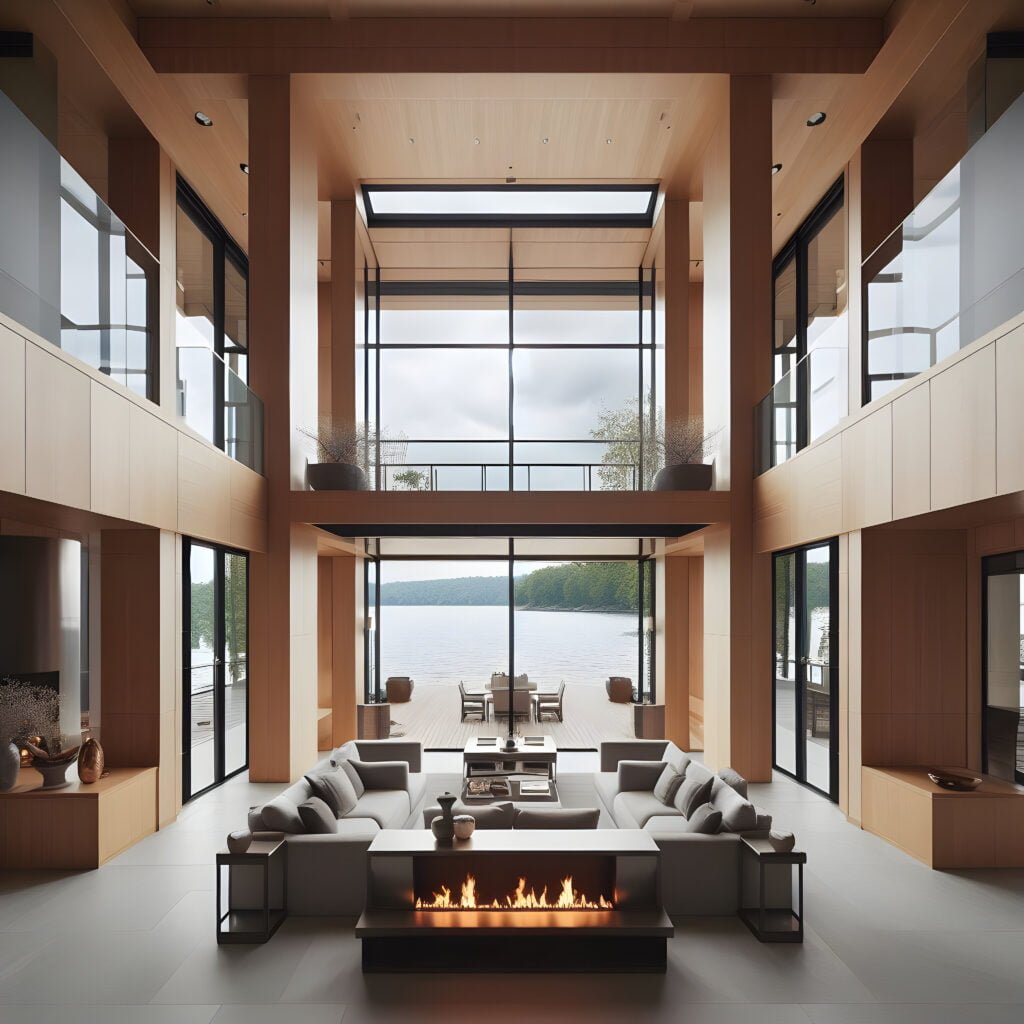
So, you’re captivated by the eclectic artistry and historical richness of Georgian design. But what are the signature elements that make a Georgian interior, well, Georgian? As the legendary designer Bunny Williams once said, “If you love something, it will work. That’s the only real rule.” And in Georgian interiors, there’s a lot to love.
Let’s start with the bones of the home—the architectural elements. Georgian architecture is all about symmetry and proportion. Think balanced window placements, evenly spaced doors, and a sense of harmony that’s almost musical in its precision. It’s like cooking a well-balanced meal; each ingredient complements the other, creating a feast for the eyes.
Now, let’s talk color. Georgian interiors often feature a muted palette, but don’t mistake this for dullness. Soft blues, sage greens, and warm earth tones create a backdrop that allows the architectural and decorative elements to shine. It’s like setting the stage for a play; the backdrop enhances, never overshadows, the main act.
And oh, the craftsmanship! From intricately carved fireplaces to hand-painted wallpapers, Georgian interiors are a celebration of artisanal skills. Materials like mahogany, oak, and walnut were the stars of Georgian furniture, offering both durability and aesthetic appeal. Fabrics like silk, velvet, and brocade added a touch of opulence, making even the simplest room feel like a royal chamber.
But what about the decorative details? Ah, this is where your personality can truly shine. Whether it’s a grand chandelier that serves as a focal point or a collection of antique books that add a scholarly touch, the accessories in a Georgian interior are like the jewelry that completes an outfit. Choose pieces that speak to you, whether they’re period-authentic or modern interpretations.
The key to mastering Georgian Interior Design lies in understanding its core principles—symmetry, proportion, and a deep respect for craftsmanship—while also leaving room for personal expression. It’s about creating a harmonious living space that’s both a nod to history and a reflection of you.
The Craftsmanship of Elegance: Georgian Furniture and Its Legacy
Georgian furniture—the unsung hero of Georgian Interior Design. You see, furniture in this era wasn’t just about function; it was a work of art, a statement of craftsmanship and elegance. As Charles Eames, the renowned designer, aptly put it, “The details are not the details. They make the design.” And when it comes to Georgian furniture, the details are truly exquisite.
Imagine walking into a room and being greeted by a Chippendale armchair, its mahogany frame intricately carved with Gothic, Chinese, or classical motifs. Or perhaps a Sheraton side table catches your eye, its delicate inlays and tapered legs a testament to the era’s refined sensibilities. These pieces were designed by master craftsmen like Thomas Chippendale, George Hepplewhite, and Thomas Sheraton, who left an indelible mark on the world of furniture design.
But how do you identify a genuine Georgian piece? Well, it’s all in the details. Look for high-quality woods like mahogany, walnut, or oak. Examine the craftsmanship; dovetail joints, hand-carved details, and a rich patina are all signs of a period piece. And don’t forget to consider the style. Georgian furniture is known for its elegance, but each designer brought their own flair, be it the rococo swirls of early Georgian pieces or the neoclassical lines of the later period.
Now, you might be wondering, “How do I incorporate these historical pieces into my modern home without it feeling like a museum?” The answer is balance. Pair a Georgian dining table with contemporary chairs, or place a modern lamp on a Sheraton side table. It’s all about creating a harmonious living space that celebrates both the old and the new.
Remember, you’re not just buying furniture; you’re investing in pieces of art that bring history, craftsmanship, and a touch of elegance into your home. And the best part? These pieces are not just beautiful; they’re also incredibly functional, offering a blend of form and function that’s as relevant today as it was in the 18th century.
Tips for Modern Georgian Style Implementation
So, you’re smitten with the elegance of Georgian Interior Design, and who could blame you? But the question that often arises is, “How do I bring this historical grandeur into my 21st-century home?” As the iconic designer Dorothy Draper said, “Decorating is fun!” And infusing your modern space with Georgian elements should be an exciting, creative endeavor, not a daunting task.
First things first, let’s talk color. While Georgian interiors often leaned towards muted palettes, don’t be afraid to add a splash of modern vibrancy. A bold accent wall in a rich hue can serve as a delightful contrast to traditional Georgian elements like wainscoting or crown molding. It’s like adding a contemporary twist to a classic cocktail; the essence remains, but the experience is refreshingly new.
Now, onto fabrics and textiles. Georgian style loved its velvets, silks, and brocades, but you can easily modernize this by opting for more practical, yet equally luxurious, materials like linen or textured cotton. Think of it as dressing a classic silhouette in modern fabrics; the look is updated, yet the charm is timeless.
And what about decorative accents? Ah, this is where you can really let your personality shine. While a Georgian home might feature classical art and antique books, don’t hesitate to mix in some modern art or even a bit of kitsch. The key is to create a harmonious living space that reflects both historical grandeur and your own personal style.
Structural alterations are another way to modernize your Georgian-inspired home. Open floor plans may not have been a thing in the 18th century, but they’re certainly popular now. Consider knocking down a non-load-bearing wall to create a more open, airy space. Just make sure to maintain those Georgian proportions to keep the essence intact.
Lastly, don’t forget the power of lighting. While you may not want to go full-on with crystal chandeliers, modern lighting fixtures with a nod to Georgian elegance can work wonders. Think pendant lights with intricate designs or even a contemporary chandelier that complements the room’s color scheme.
Remember, Georgian Interior Design is not about creating a period-perfect replica; it’s about taking the elements that speak to you and adapting them to suit your modern lifestyle. It’s about creating a harmonious living space that’s both a tribute to history and a reflection of you.
The American Perspective: Georgian Style Across the Pond
The Georgian style—a design language so compelling that it didn’t just stay confined to British shores; it made its way across the Atlantic, finding a new home and a new voice in America. As the famous designer David Hicks once said, “The best rooms have something to say about the people who live in them.” And in America, Georgian design began to speak with a slightly different accent.
Picture this: You’re in a colonial American home. At first glance, it’s unmistakably Georgian—symmetrical facades, classical proportions, and all. But then you notice something different. The materials, perhaps? American Georgian homes often utilized local resources, like wood, instead of British brick. It’s a subtle shift, but one that adds a unique, rustic charm to the American interpretation of Georgian style.
And let’s talk about scale. Everything’s bigger in America, they say, and Georgian design was no exception. American homes of this style often featured larger rooms and more expansive outdoor spaces, adapting the design language to the New World’s sense of boundless possibility.
But what truly sets American Georgian design apart is its democratic spirit. In Britain, Georgian homes were often the domain of the wealthy, but in America, the style was embraced by people from various walks of life. It became less about social status and more about a shared aesthetic vision—a vision of a harmonious living space that could be both grand and welcoming.
So, if you’re considering adopting Georgian Interior Design in your American home, embrace this democratic ethos. Mix high and low elements, antique and modern, British and American. The beauty of Georgian design lies in its adaptability, its ability to evolve while staying true to its core principles of symmetry, proportion, and classical elegance.
Remember, whether you’re in a Georgian townhouse in London or a colonial home in Virginia, the essence of this design style remains the same. It’s about creating spaces that are not just beautiful but also deeply resonant, spaces that, as Hicks would say, have something to say about the people who live in them.
The dance between the old and the new a delicate ballet that every lover of Georgian Interior Design must master. As the iconic designer Kelly Wearstler puts it, “The mixture of weird textures and organic surfaces creates an interesting dialogue.” And what’s more interesting than blending centuries-old design principles with today’s modern conveniences?
Let’s start with technology. In a world where smart homes are becoming the norm, integrating modern tech into a Georgian setting might seem like a challenge. But fear not! The key is subtlety. Hide your flat-screen TV behind a beautiful antique armoire, or use smart plugs that can be controlled via your phone but don’t disrupt the room’s aesthetic. It’s like adding a dash of modern spice to a classic recipe—the essence remains, but the experience is enhanced.
Now, what about those modern conveniences we can’t live without, like air conditioning or modern kitchen appliances? Here, the trick is to choose versions that echo the Georgian love for craftsmanship and detail. Opt for appliances with a vintage look but modern functionality, or hide them behind custom cabinetry that matches the rest of your decor. It’s all about creating a harmonious living space that respects the past while embracing the present.
And let’s not forget sustainability—a concern that’s very much a part of our modern ethos. Georgian homes were built to last, using high-quality materials that have stood the test of time. Emulate this by choosing sustainable, durable materials that not only look beautiful but are also kind to our planet. It’s a way to honor the craftsmanship of the past while being mindful of the future.
But what if you’re working with a distinctly modern space and want to infuse it with Georgian elegance? Here, focus on the details. Add crown molding, wainscoting, or a beautiful antique fireplace mantel. Use paint and textiles to bring in the classic Georgian color palette. Remember, you don’t have to go all out to create a sense of Georgian grandeur; sometimes, a touch of classical elegance is all it takes to transform a space.
In the end, marrying history and modernity is not just possible; it’s a creative adventure. It’s about respecting the wisdom of the past while making room for the innovations of the present. It’s about creating a harmonious living space that’s a true reflection of you—your tastes, your needs, and your dreams.
The Sanctuary of Elegance: Psychological Harmony in Georgian Design
The sanctuary of the home—a place where we seek comfort, peace, and a sense of well-being but have you ever stopped to consider how much your interior design choices can impact your mental state? As the renowned designer Ilse Crawford says, “The more virtual our lives get, the more we hunger after something genuine. What people are really interested in is not perfection but the process; the spirit of the maker is perfectly imperfect.” And what better way to explore this than through the lens of Georgian Interior Design?
You see, Georgian design isn’t just about visual appeal; it’s about creating a harmonious living space that nourishes the soul. The symmetry, the balance, the classical proportions—these aren’t just aesthetic choices; they’re rooted in principles of environmental psychology. Studies have shown that symmetry and balance can induce a sense of peace and well-being, making you feel more at ease in your own home.
And what about color? Ah, the Georgians were onto something with their muted palettes of soft blues, greens, and earth tones. These colors are known to have a calming effect, reducing stress and promoting a sense of tranquility. It’s like a visual form of aromatherapy, soothing your senses as you move through the space.
But it’s not just about the individual elements; it’s about how they come together to create a cohesive whole. The flow from room to room, the way natural light is harnessed to create different moods, the choice of materials and textures—all these contribute to a sense of holistic well-being. It’s like a well-composed symphony; each note is beautiful on its own, but it’s the way they come together that creates magic.
Real-life accounts from those who have embraced Georgian design principles often speak of a newfound sense of mental comfort and peace. It’s as if the home becomes a sanctuary, a private retreat where the chaos of the outside world fades away, leaving only a sense of timeless elegance and psychological harmony.
So, if you’re looking to create a home that’s not just beautiful but also emotionally resonant, consider the principles of Georgian design. It’s not just about decorating; it’s about creating a sanctuary—a harmonious living space where you can truly be yourself, in all your perfectly imperfect glory.
Community and Inspiration: Engaging with Fellow Enthusiasts
There’s something incredibly enriching about connecting with like-minded souls, especially when it comes to something as personal as your home’s design. As the famous designer Jonathan Adler puts it, “Your home should rise up to greet you.” And what better way to ensure that than by drawing inspiration from a community of Georgian Interior Design enthusiasts?
First off, let’s talk social media. Platforms like Instagram and Pinterest are treasure troves of inspiration. Simply search for hashtags like #GeorgianInteriorDesign or #GeorgianHome, and you’ll be greeted by a plethora of ideas, from grand, sweeping spaces to tiny, intricate details. It’s like having a constantly updated mood board at your fingertips.
But the online world offers more than just visual inspiration; it’s also a space for meaningful dialogue. Consider joining forums or Facebook groups dedicated to Georgian design. Here, you can ask questions, share your own experiences, and even get tips on where to find authentic Georgian pieces. It’s a way to deepen your understanding of this style, guided by the wisdom of a community.
And don’t underestimate the value of real-world interactions. Antique fairs, design exhibitions, and even open houses can be great opportunities to see Georgian design principles in action. Plus, they offer the added bonus of tactile experience—you can feel the textures, see the colors in natural light, and truly immerse yourself in the design.
Lastly, consider reaching out to experts in the field. Many interior designers specialize in historical styles and offer consultations. It’s an opportunity to get personalized advice tailored to your home’s specific needs, ensuring that your Georgian-inspired space is not just beautiful but also functional and harmonious.
Remember, the journey to creating a Georgian-inspired home is not one you have to take alone. The community is a valuable resource, offering inspiration, practical advice, and even emotional support. It’s about creating a harmonious living space that’s not just a reflection of history but also a reflection of the collective wisdom and creativity of people who share your passion.
Conclusion: Embracing the Enduring Appeal of Georgian Interior Design
We’ve explored the multifaceted world of Georgian Interior Design. From its historical roots to its modern adaptations, we’ve delved into the elements that make this style so enduringly captivating. As the renowned designer Verner Panton once said, “The main purpose of my work is to provoke people into using their imagination.” And truly, Georgian design does just that—it invites you to imagine a space that’s not just visually stunning but also emotionally resonant.
We’ve explored the historical nuances that shaped this design language, the eclectic artistry that keeps it ever-evolving, and the signature elements that define its timeless elegance. We’ve looked at how this style has crossed oceans, finding a new voice in American homes, and how it can be adapted to meet the demands of modern living. And let’s not forget the psychological harmony that a well-designed Georgian space can bring to your life.
But perhaps the most beautiful aspect of Georgian design is its adaptability. Whether you’re a purist looking to create a period-perfect Georgian home or a modernist seeking to infuse your contemporary space with a touch of classical elegance, this style offers the flexibility to make it your own. It’s about creating a harmonious living space that’s a true reflection of you—your tastes, your needs, and your aspirations.
So, as you embark on your own journey through the world of Georgian Interior Design, remember that you’re not just decorating a space; you’re creating a sanctuary—a home that nourishes your soul and elevates your daily life. And in that endeavor, you’re not alone. A community of fellow enthusiasts awaits, ready to offer inspiration, advice, and a shared sense of passion for this enduring style.
Here’s to embracing the endless possibilities that Georgian design has to offer and to creating spaces that are not just beautiful but also deeply, profoundly you.

